Hypershell X Ultra review: the wearable robot legs I didn’t know I wanted
adventure-focused exoskeleton is niche but effective
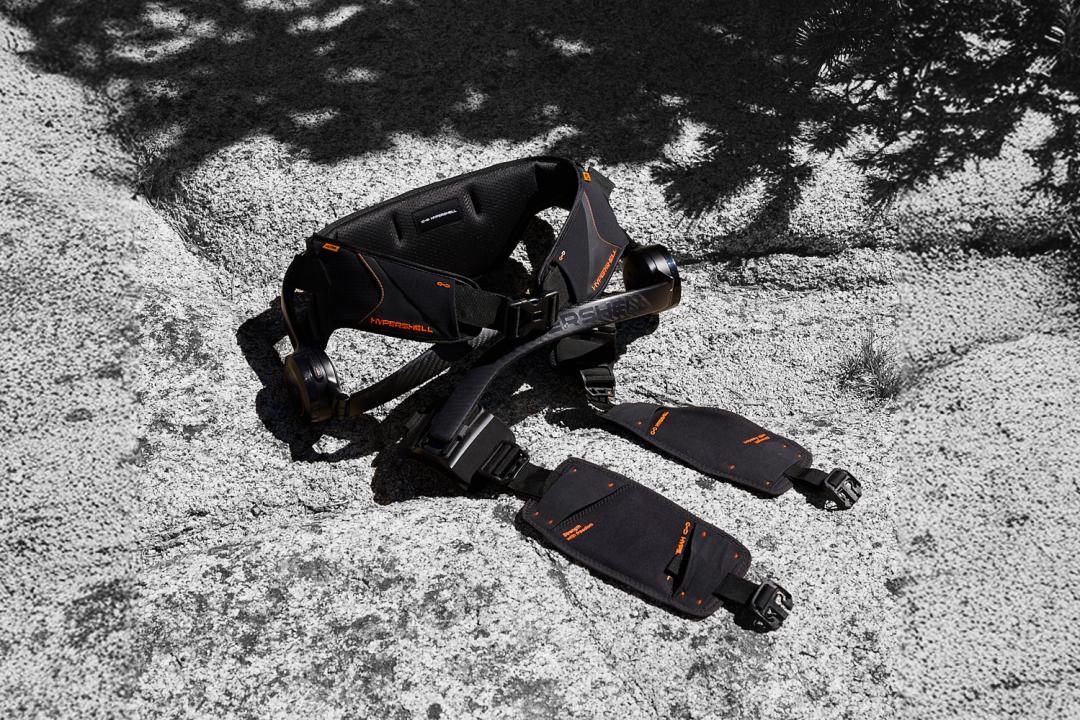
Stuff Verdict
More hiking extravagance than essential, but the Hypershell X Ultra really does help make outdoor adventures less demanding on your body.
Pros
- Lowers exertion and makes outdoor activity that bit easier
- Straightforward setup and comfortable to wear
- Impressively light for the assistance provided
Cons
- It’s a serious investment
- Hyper mode saps battery fast
Introduction
Say the word ‘exoskeleton’ and sci-fi instantly springs to mind. Ripley’s work loader from Alien; Iron Man; Wallace and Gromit. But it turns out the next evolution of wearable tech is a reality right now – and not just for heavy industry. Fledgling firm Hypershell is aiming to help adventurers and outdoor aficionados go further with its next-gen rig.
The Hypershell X Ultra uses miniaturised motors to assist with movement, giving a peak 1000W, but promises to be light enough that it won’t become a hindrance for mountaineers and hikers when powered down. There are also benefits for cyclists, and could even come in handy for parents being run ragged by kids with endless energy.
At $2000/£1599 it’s a serious investment. You could completely cover both arms in fitness trackers for less. Does it deliver enough of a helping hand to justify the outlay? I wore one for a few weeks of workouts to find out.
Design & build: weight watcher
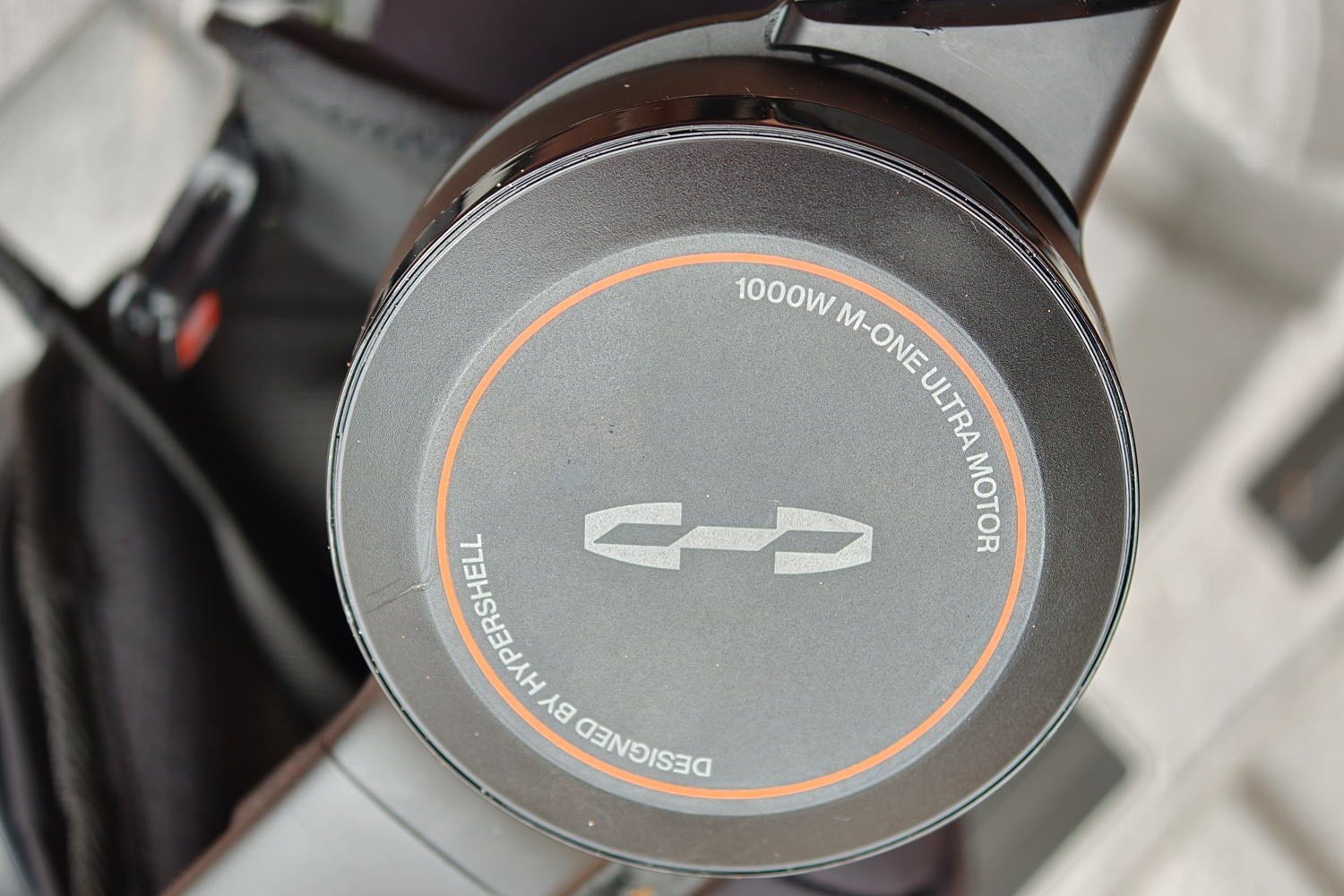
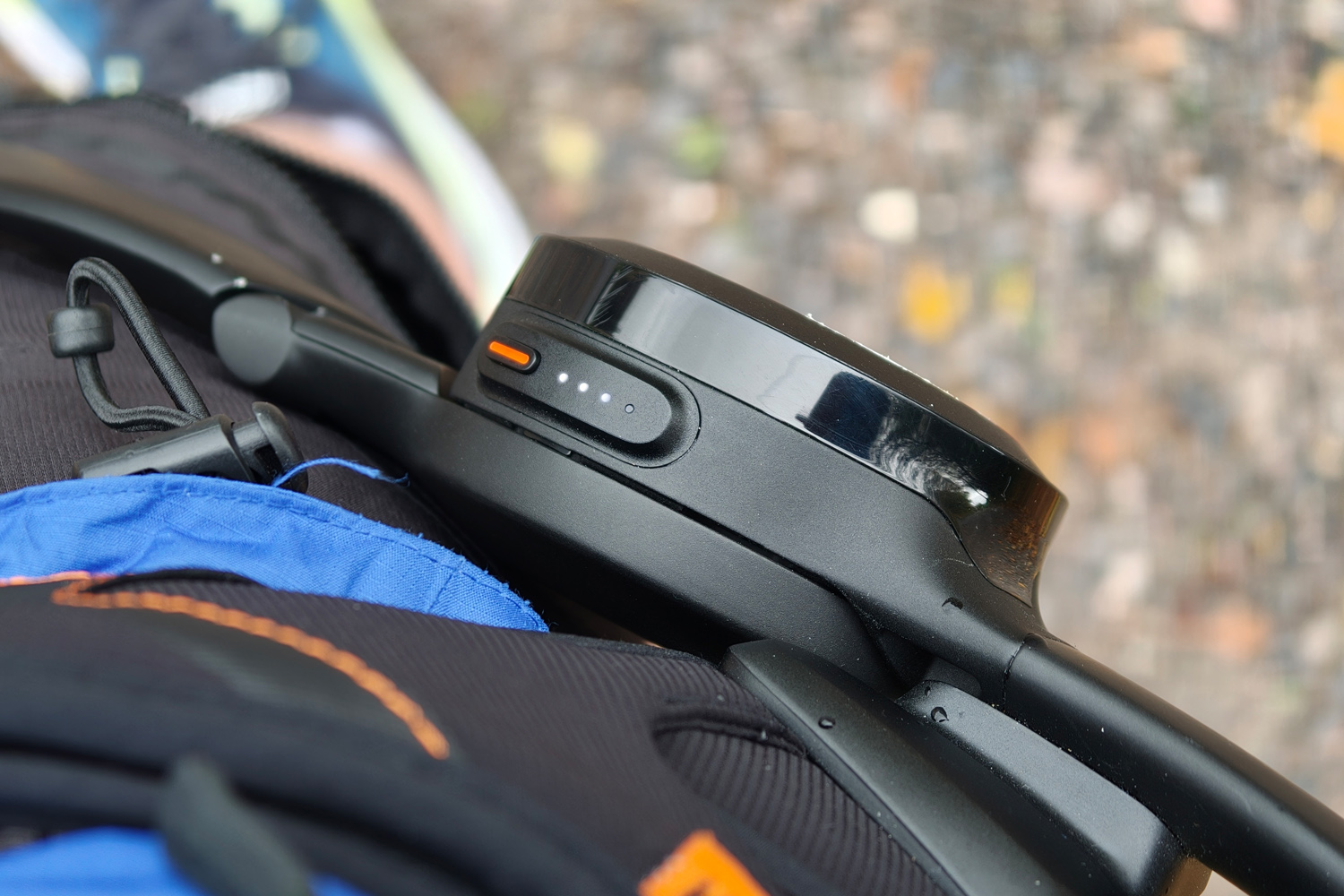

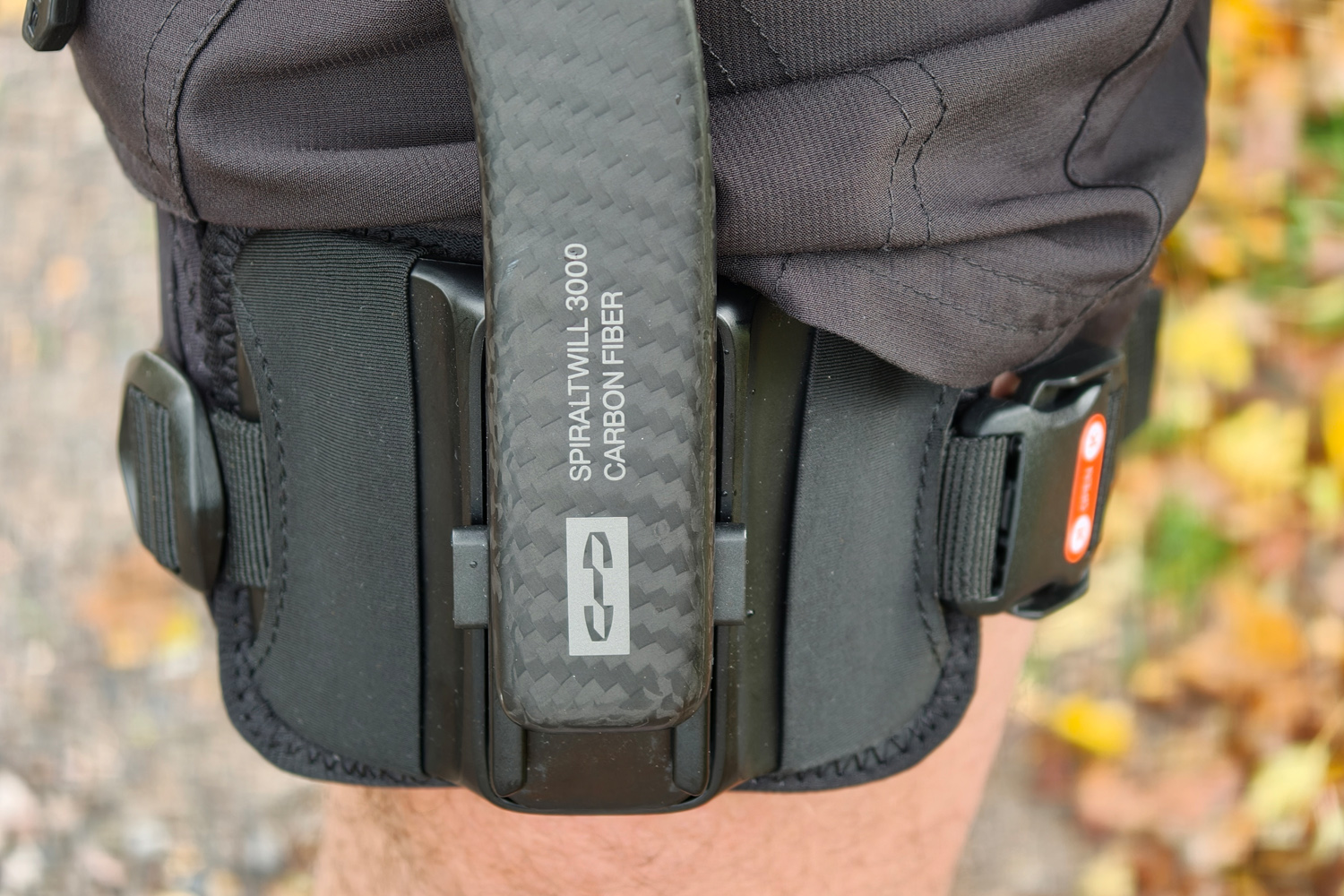
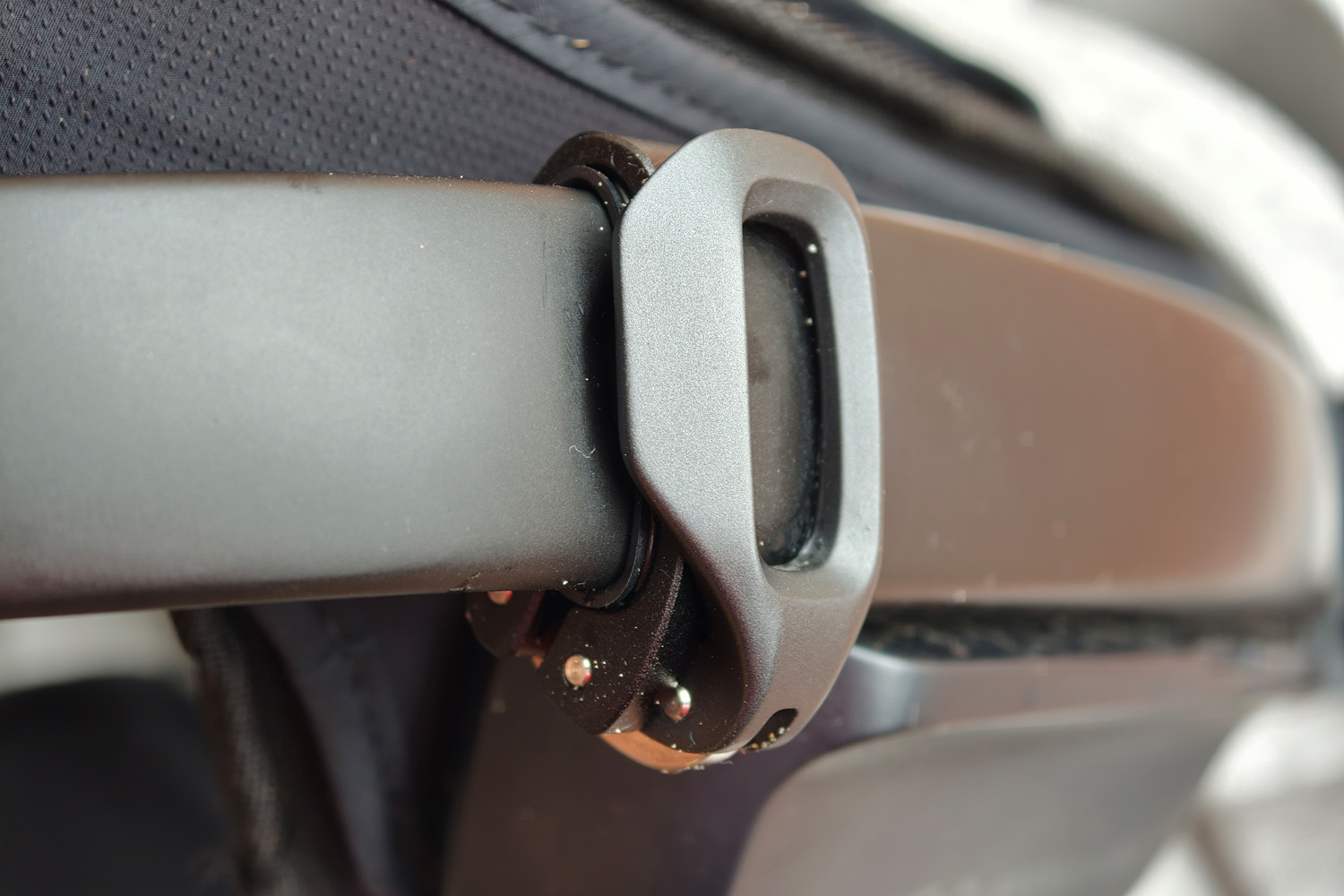
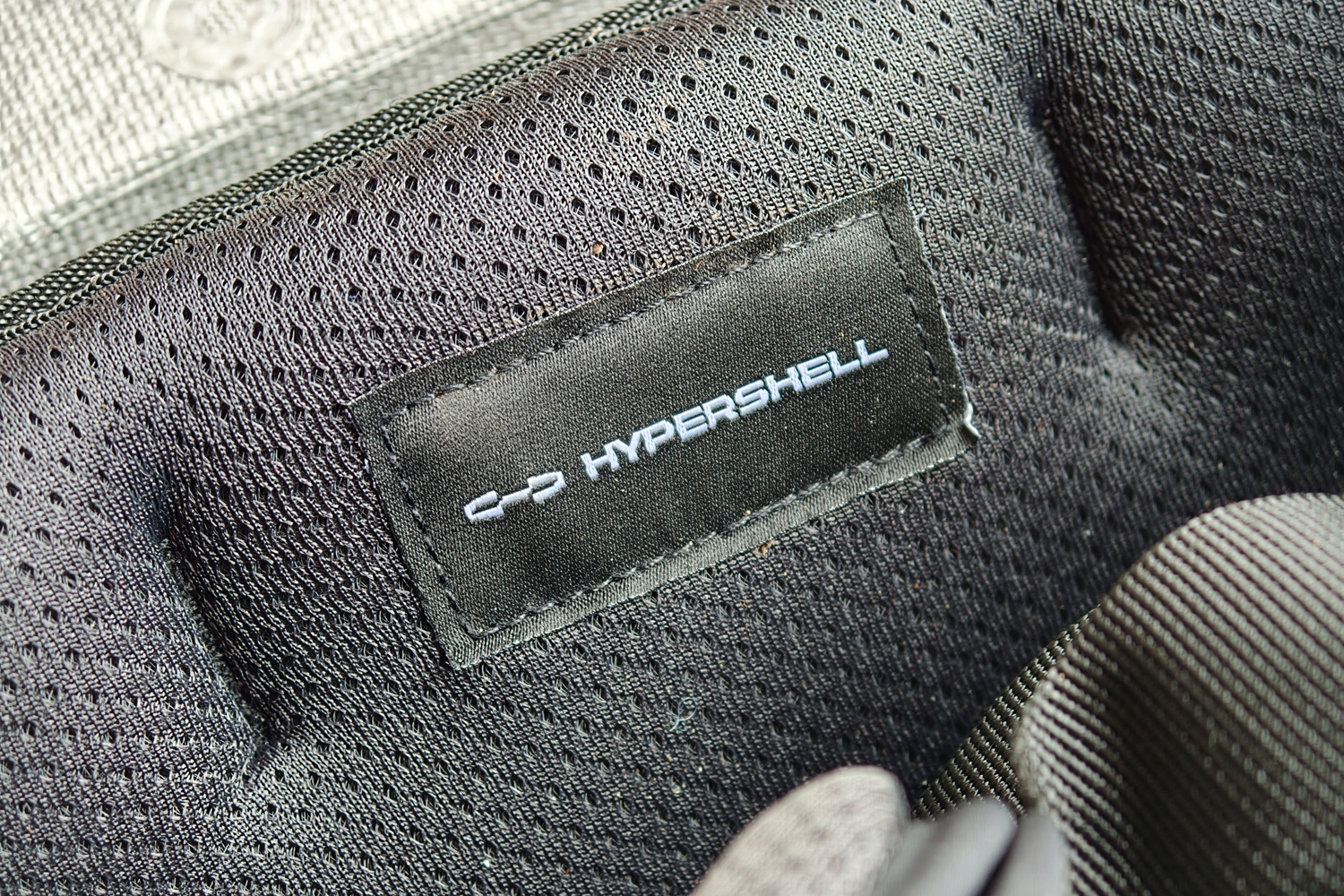
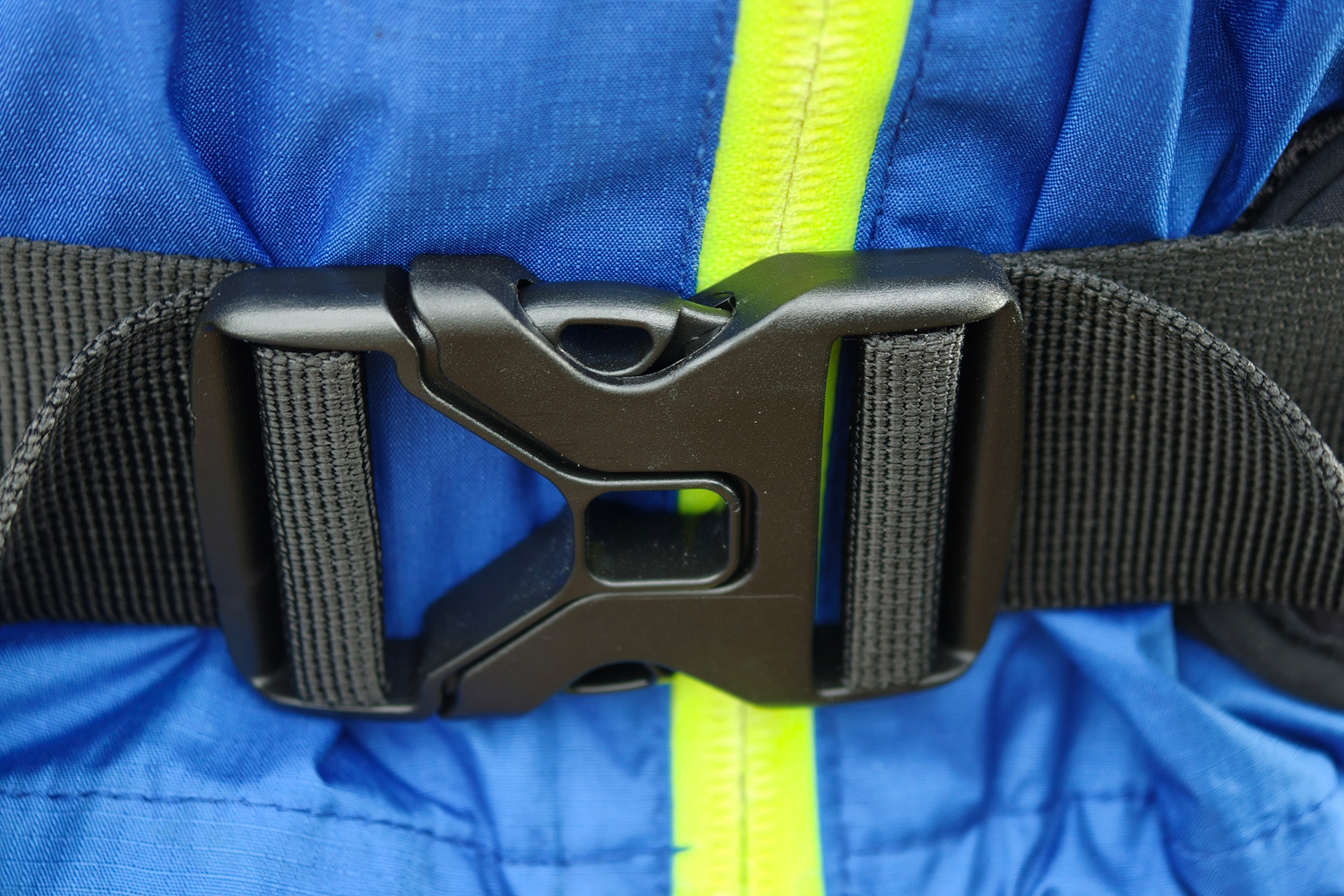
Calling the Hypershell X Ultra an exoskeleton might be over-egging the pudding just a bit: this waist-worn kit only assists your legs, not your whole body. A tiny motor on each hip articulates a carbon fibre leg, which you fix to your own just above the knee using elasticated straps.
The frame is made from titanium alloy, with size adjustment sliders at the rear next to the battery compartment. The straps all have plenty of padding, and use the same sort of breathable material you’ll find on a hiking backpack; it helped stave off sweat during my testing. Is it subtle? Not at all – there’s no hiding your wearing something techy around your thighs – but it’s considerably sleeker than the firm’s older models. The mainly black colour scheme helps.
Even with all the cushioning, electronics and battery pack, the whole thing weighs just 1.8kg. I could put it on over my usual outdoor gear and not feel particularly more laden down than usual. It ships in an equally lightweight carry case made from compressed styrofoam (it’s more lavish than that sounds, honest), which keeps it safe while travelling. I’d much rather lug that into the boot of my car than the Hypershell on its lonesome, and risk damaging the bare carbon fibre.
Once tightly fastened I could sit down normally (as long as long as the chair was wide enough), and when switched off I didn’t notice any extra resistance, so never got the urge to take it off as soon as the motors weren’t needed any more. I found the leg straps more noticeable than the waist one, as they really need to be tightened well to be effective.
Given Hypershell specifically sells the X Ultra as an outdoor exoskeleton, I was a bit surprised it’s only IP54 rated against dust and water. That’s enough to survive a light rain shower, but means a sudden monsoon could be a cause for concern. I got caught out on one bike ride, but other than having to dry out the padding, the X Ultra was none worse for wear.
Features: need for speed
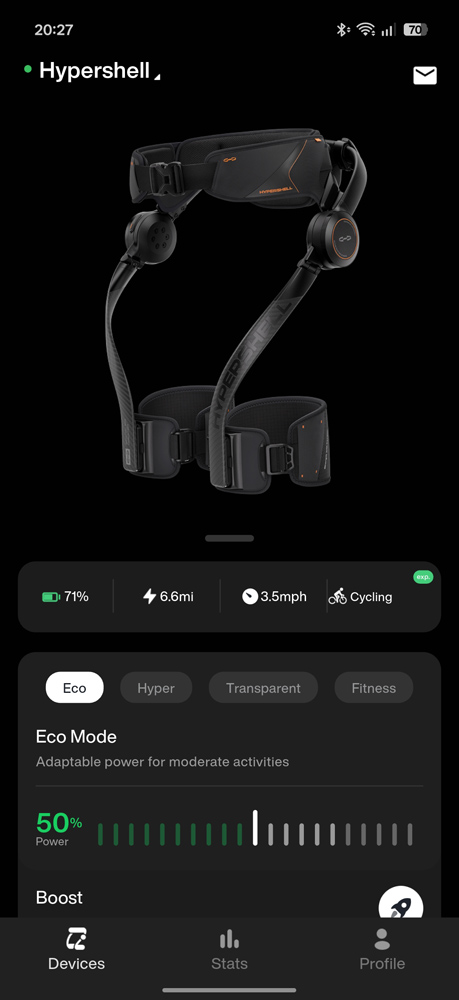
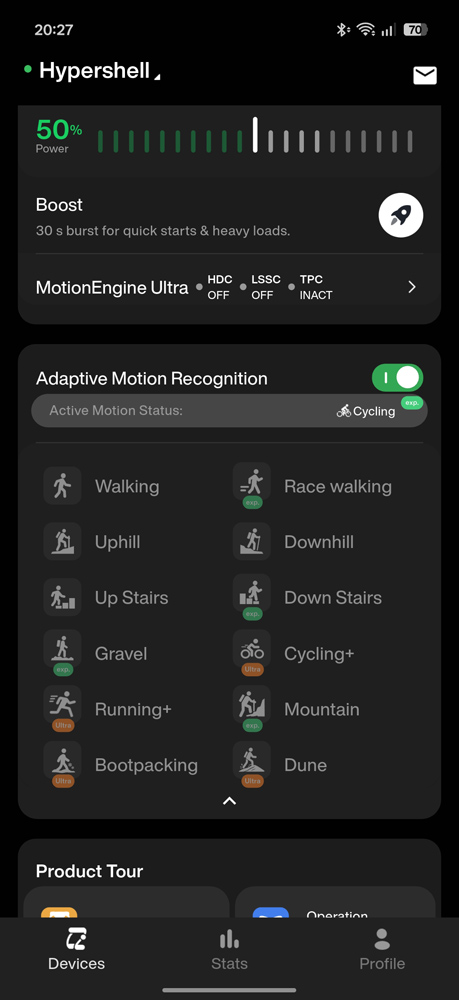
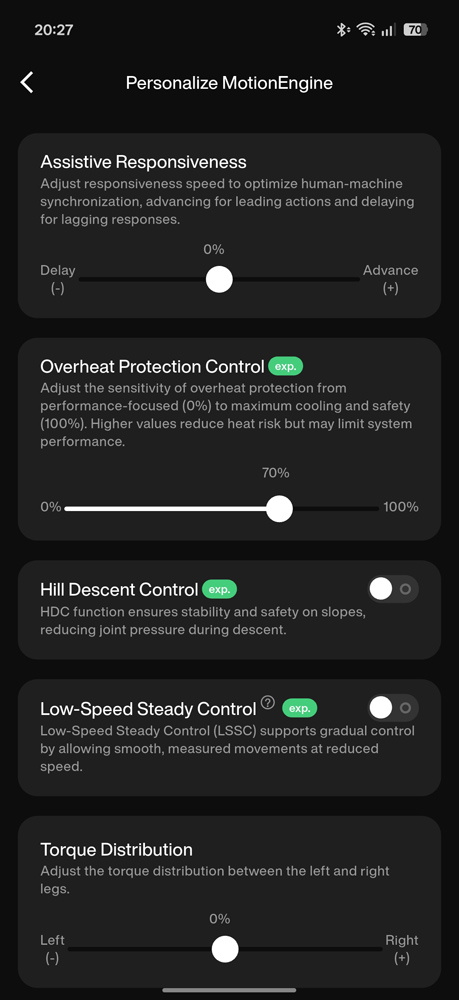
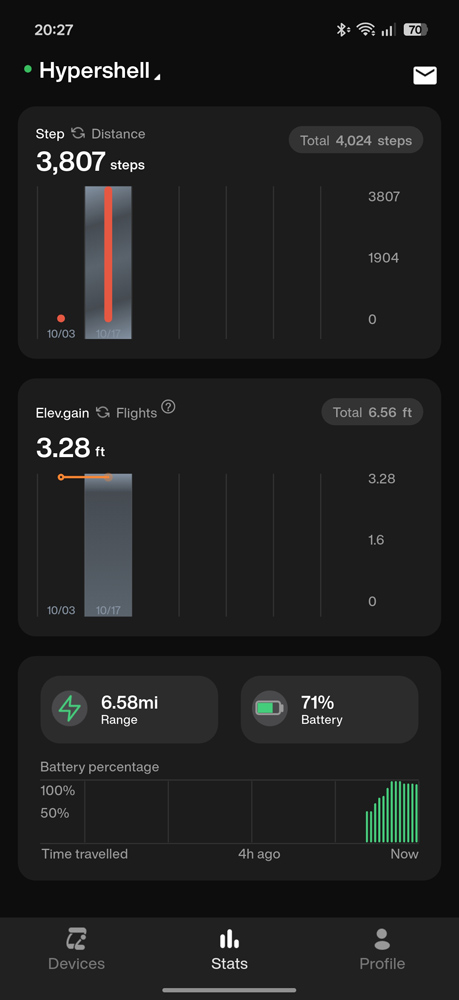
Hypershell’s smartphone companion app clearly walks you through the initial setup, showing how to adjust the fit and pair the rig over Bluetooth. From there, it can swap the motors between four different modes: Transparent, Eco, Hyper, and Fitness.
Transparent, unsurprisingly, provides no assistance whatsoever. I largely stuck with the Eco mode, which provides a subtle level of help and is ideal for walking or light hikes. Hyper turns things up a gear, giving a noticeable amount of assistance. Fitness works the opposite way, actively resisting your movement to make you work harder than usual.
You can adjust the amount of assistance manually for each mode, and activate a boost mode that provides 30 seconds of maximum power. Did deeper and there’s some properly fine-grain tweaking on offer, like a hill descent setting for providing extra stability on slopes. There’s even a slider to adjust the torque distribution between the left and right legs. I can see this being particularly useful for anyone with mobility issues. I should flag here that the Hypershell isn’t classed as a medical device, and the firm isn’t allowed to make any health claims – but equally it can’t dictate what buyers use the rig for.
You can use the companion app to set a specific motion type – say cycling, downhill walking, or gravel hiking – to adjust the power delivery accordingly, or leave it in an automatic mode that uses machine learning to recognise what you’re up to. It was quick to recognise when I’d jumped on a bike, and adjust how far it would assist my legs (as pedalling pushes your thighs higher than jogging).
A neat stats page then shows you how many steps you’ve taken and how much elevation you’ve gained per day of use, as well as a battery range estimate that seemed very accurate in my testing.
In the Eco power mode the Hypershell can stretch to 30km per charge, but maximum attack in Hyper mode will have the battery sapped before 5km. A second battery doesn’t add a huge amount of extra weight to a daypack, though, and there’s one included in the box. Charging is via USB-C, needing about an hour and a half for a full refuel. It’s a shame the connector is on the Hypershell itself rather than the battery pack, though, as it means having to take the whole thing to a power socket.
Using the Hypershell: takes a load off
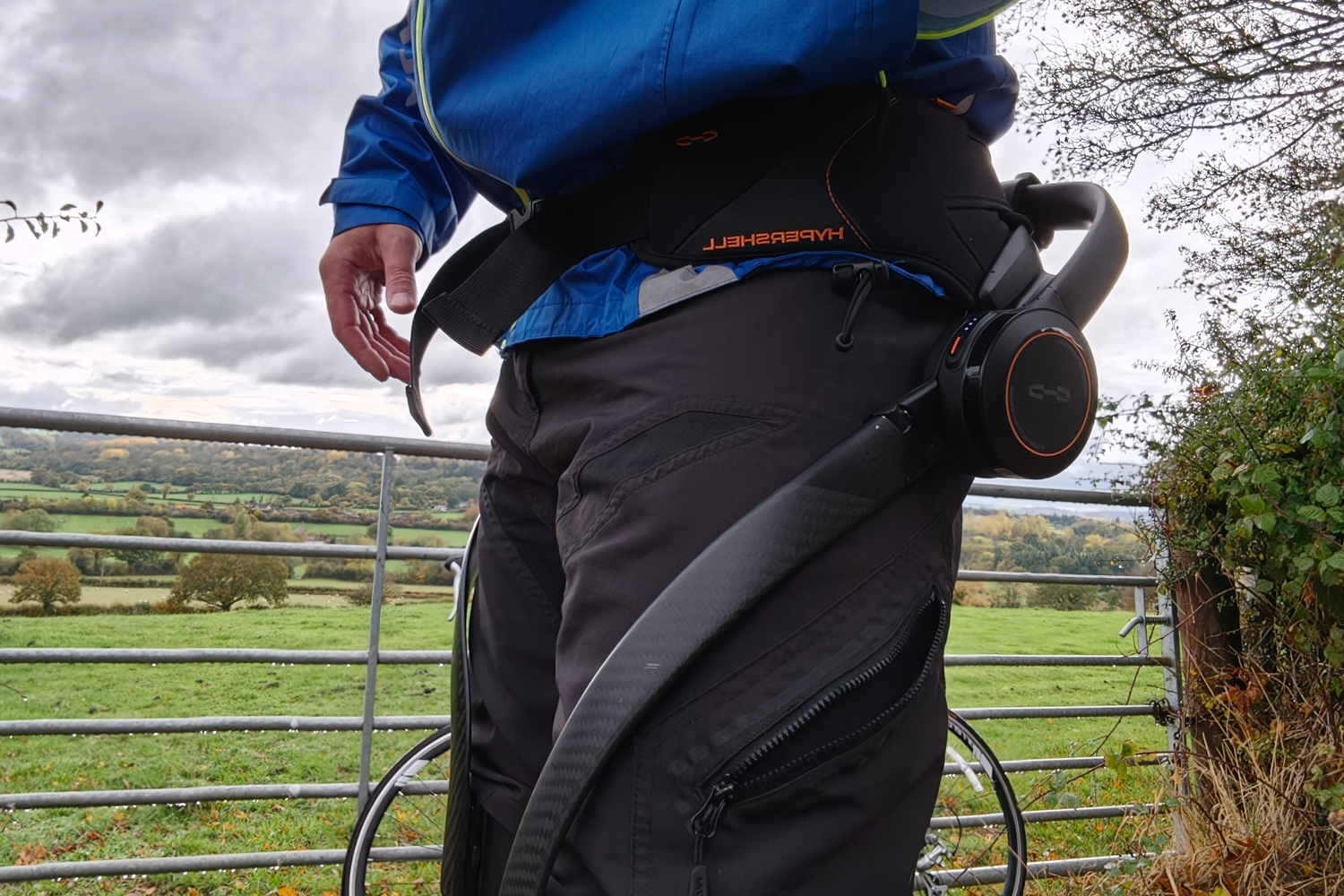
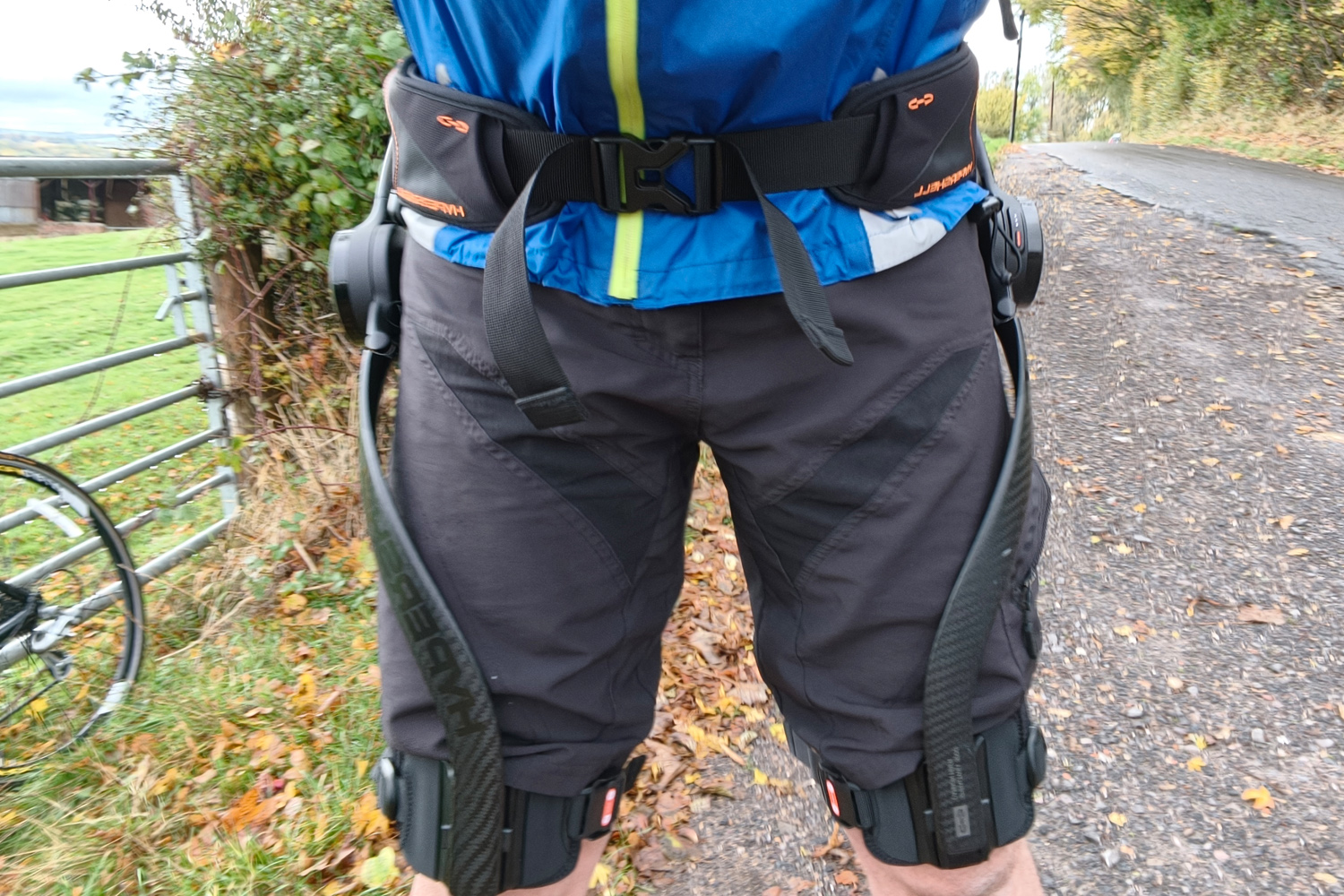
I hate to break it to you, but strapping on a Hypershell didn’t suddenly see me chasing down olympic sprinters or the Tour de France peloton. The motors aren’t moving your legs for you, only responding to your movements. Did it make a difference to my outdoor exercise, though? Absolutely.
I wore it for a mix of tests, including road and stationary cycling, running around my local park, and longer nature hikes. The firm says it can lower your physical exertion by around 20% when walking, or as much as 39% while on a bike – both of which I felt, and saw reflected in my fitness tracking data.
It was almost like I was riding an e-bike rather than my conventional bicycle, being able to push harder without completely draining my energy reserves. I still couldn’t quite summit my nemesis – a particularly steep local hill that I’d struggled with since getting back into cycling earlier in the year – though that might have more to do with gearing and wet weather. I didn’t need nearly as much of a breather afterwards as I normally do.
Muscle soreness and stiffness also felt less than usual after walking and hiking, even with my young son in a carrier on my back. Carrying a full pack of camping gear didn’t seem quite as daunting with the Hypershell on, and crucially it didn’t become a burden once the battery went flat.
There really wasn’t much to get used to, as you’re mostly the one leading the way – though the more powerful modes could take a half-step longer to stop than you do. That said, I liked that even with assistance, I was still putting in the majority of the effort. I’m not sure I’d spend this sort of money purely for resistance training, though – while I was definitely having to push against the force of the motors with Fitness mode active, strapping on a few leg weights would be a whole lot cheaper.
Hypershell verdict
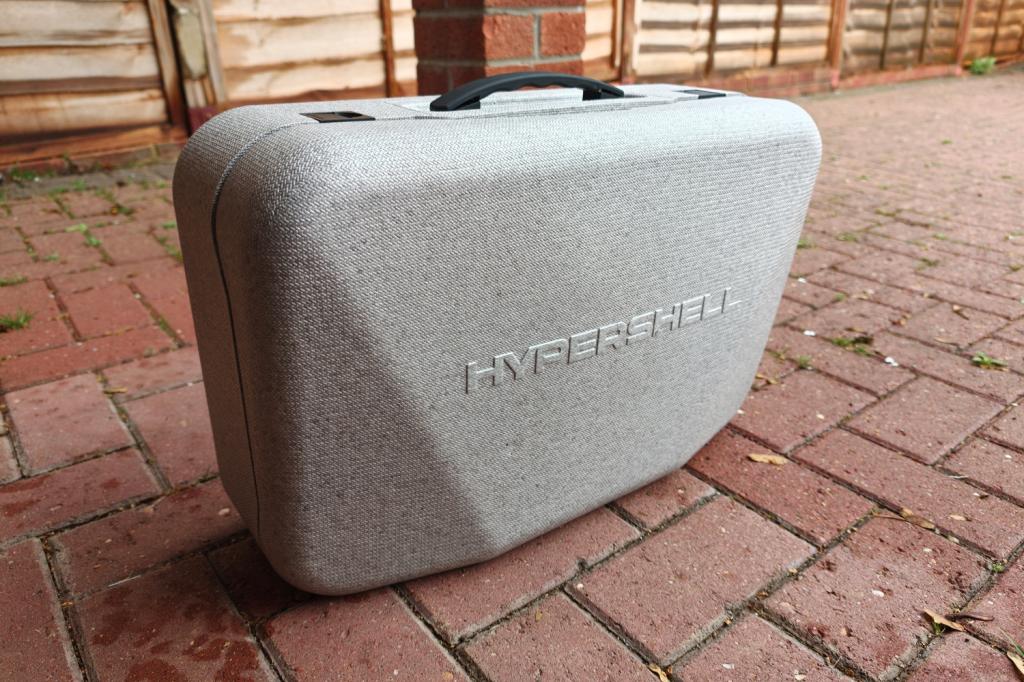
Giving your legs some robotic assistance might sound far-fetched right now, but I bet the first person to rock up to a bike meet decked out entirely in lycra raised a few eyebrows too.
The Hypershell X Ultra takes the edge off strenuous outdoor activity, doesn’t need an engineering degree to operate, and won’t weigh you down like an anchor when powered off either. The fitness mode also puts an interesting spin on things for people who are in peak condition – and aren’t averse to spending big bucks on equipment. I don’t think it will filter through to the mainstream any time soon, but for a certain kind of crowd it has real appeal.
Stuff Says…
More hiking extravagance than essential, but the Hypershell X Ultra really does help make outdoor adventures less demanding on your body.
Pros
Lowers exertion and makes outdoor activity that bit easier
Straightforward setup and comfortable to wear
Impressively light for the assistance provided
Cons
It’s a serious investment
Hyper mode saps battery fast
Hypershell X Ultra technical specifications
| Power | 1000W |
| Range | Up to 30km |
| Connectivity | Bluetooth |
| Dimensions | 430x260x125 mm (folded) |
| Weight | 1.8kg / 4.0lb |



